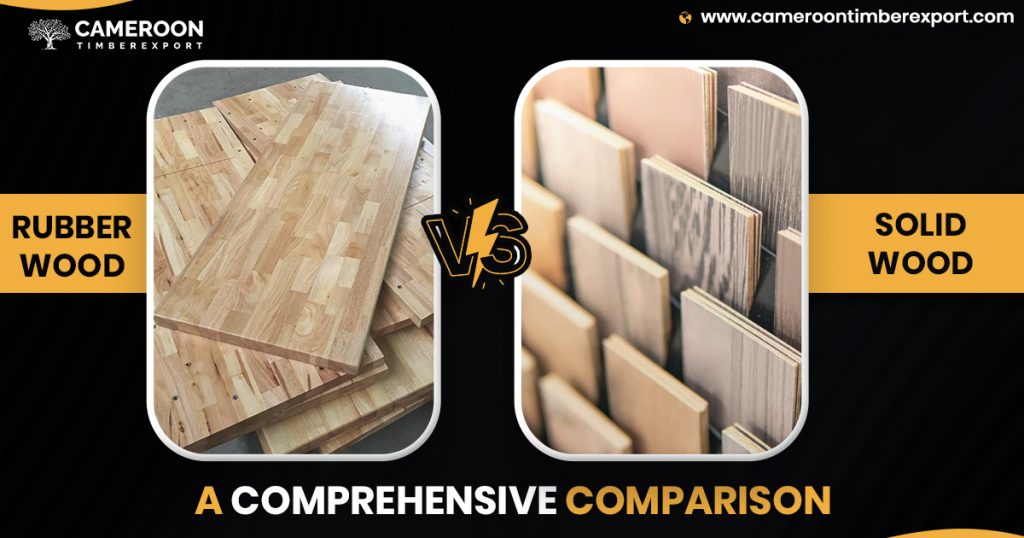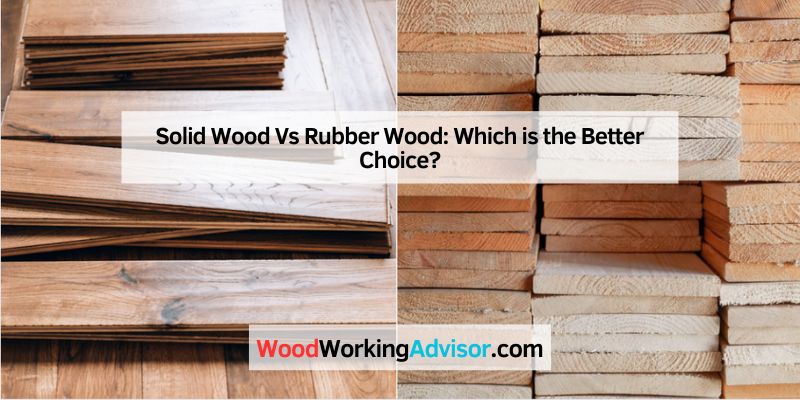Choosing between solid wood and rubber wood can be tricky. Both have unique qualities and uses.
Comparing solid wood and rubber wood helps you understand which suits your needs better. Solid wood has been a traditional favorite for its durability and natural beauty. It’s often used in high-quality furniture and flooring. Rubber wood, on the other hand, is a more sustainable option and comes from the rubber tree.
It’s often used in budget-friendly furniture and is known for being eco-friendly. By comparing these two types of wood, you’ll gain insights into their benefits and drawbacks. This way, you can make an informed decision for your next furniture or home improvement project. Let’s dive deeper into the characteristics of each to see which one fits your lifestyle and needs best.

Credit: alacritys.in
Solid Wood Characteristics
Solid wood is known for its durability. It lasts many years. Solid wood is also very strong. This makes it great for furniture. Solid wood can handle heavy weights. It does not break easily. It can withstand daily use. Solid wood can resist dents and scratches. This makes it a good choice for busy homes.
Solid wood comes in many types. Oak is very strong and durable. Maple is also strong and has a nice look. Cherry wood is hard and has a rich color. Walnut is dark and strong. Pine is softer but still durable. Each type has unique qualities. These types are used in different kinds of furniture.
Rubber Wood Characteristics
Rubber wood, a sustainable option, boasts a light color and smooth texture. Solid wood, on the other hand, offers durability and rich grain patterns. Both types serve different purposes in furniture making.
Sustainability And Eco-friendliness
Rubber wood is very eco-friendly. It is harvested from rubber trees that no longer produce latex. This makes it a sustainable choice. Rubber trees grow fast and can be replanted easily. This ensures a steady supply of wood. Using rubber wood helps reduce deforestation. It also helps in conserving forests.
Common Uses Of Rubber Wood
Rubber wood is used in making furniture. It is also used in flooring. Many people use it for making kitchen cabinets. It is a popular choice for toys and decorative items. Rubber wood is valued for its durability and smooth finish. It is often used in interior design projects. Its versatility makes it a favorite among designers.

Cost Comparison
Comparing solid wood and rubber wood, solid wood is generally more expensive due to its durability and quality. Rubber wood offers a more budget-friendly option with decent strength and a lighter weight. Both choices have their own benefits depending on your needs and budget.
Initial Purchase Price
Solid wood is more expensive than rubber wood. Solid wood furniture has a higher price because it is more durable. Rubber wood is often cheaper. This makes rubber wood a good choice for budget buyers. The initial cost of solid wood is greater. But it can last longer.
Long-term Value
Solid wood has a higher long-term value. It lasts for many years. Solid wood furniture can be refinished easily. Rubber wood may wear out faster. It might need replacing sooner. Solid wood can increase in value over time. It is a better investment for the future.

Credit: oakfurniturestore.co.nz
Aesthetic Appeal
Solid wood offers natural beauty with unique grain patterns, while rubber wood provides a smooth, consistent texture. Both choices enhance the aesthetic appeal of furniture.
Grain Patterns And Colors
Solid wood has natural grain patterns. It shows unique swirls and lines. Colors range from light to dark shades. Each piece is different. Rubber wood has a more uniform look. Grain patterns are less pronounced. Colors are usually lighter. It gives a clean, simple appearance.
Finishing Options
Solid wood can take various finishes. You can stain it darker. Or keep it natural. Paint works well too. Rubber wood also accepts finishes. Stains and paints look good on it. But the finish may not be as deep. Both types offer flexibility. Choose based on your style.
Maintenance And Care
Solid wood requires regular polishing and dusting to maintain its natural beauty. Rubber wood needs less maintenance but is prone to scratches.
Cleaning And Upkeep
Solid wood needs regular dusting. Use a soft cloth to prevent scratches. Avoid using harsh chemicals. They can damage the surface. Rubber wood is easier to clean. Wipe it with a damp cloth. Dry it quickly to avoid moisture damage. Both types need occasional polishing. This keeps them looking good.
Repair And Restoration
Solid wood is easier to repair. You can sand out scratches. Apply a new finish to restore it. Rubber wood is harder to repair. Scratches may need professional help. Deep damages can be tricky to fix. Both types can last long with proper care. Regular maintenance helps a lot.
Environmental Impact
Solid wood often comes from mature trees, impacting forests more. Rubber wood, a byproduct of latex harvesting, minimizes waste. Both materials differ in sustainability.
Sourcing And Harvesting
Solid wood comes from natural forests. Trees can take decades to grow. This means deforestation can be a problem. It affects wildlife and ecosystems. Rubber wood comes from rubber trees. These trees are used for latex first. When they stop producing latex, they are cut down for wood. This means rubber wood uses trees that are already grown and used.
Carbon Footprint
Solid wood has a higher carbon footprint. It needs to be transported from forests. Processing also uses more energy. Rubber wood has a lower carbon footprint. It is often grown on plantations near factories. This means less transport and energy use. Rubber wood is a more eco-friendly choice.

Credit: cameroontimberexport.com
Frequently Asked Questions
Which Is Better Solid Wood Or Rubber Wood?
Solid wood is more durable and long-lasting. Rubber wood is eco-friendly and cost-effective. Choose based on your needs.
What Are The Disadvantages Of Rubber Wood?
Rubber wood is prone to insect attacks and fungal growth. It can warp and crack if not properly dried. Its durability is lower compared to other hardwoods.
Is Rubber Wood Better Than Manufactured Wood?
Rubber wood is eco-friendly, durable, and resistant to pests. Manufactured wood is often cheaper and versatile. Both have their unique advantages. Choose based on your specific needs and budget.
Which Is Better, Rubber Wood Or Teak Wood?
Teak wood is better for durability and outdoor use. Rubber wood is more affordable and eco-friendly. Choose based on your needs.
Conclusion
Choosing between solid wood and rubber wood depends on your needs. Solid wood offers durability and a timeless look. Rubber wood is more affordable and eco-friendly. Each type has its pros and cons. Consider your budget, style, and sustainability preferences.
Both options can enhance your home beautifully. Make an informed choice based on your priorities. Whether you value longevity or cost-effectiveness, there’s a wood type for you. Happy decorating!

